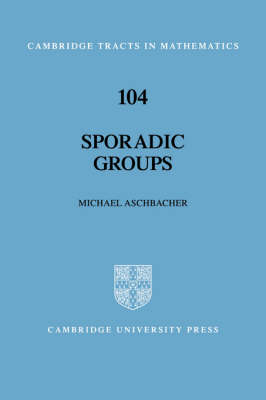Cambridge Tracts in Mathematics
2 total works
In 1970 Bernd Fischer proved his beautiful theorem classifying the almost simple groups generated by 3-transpositions, and in the process discovered three new sporadic groups, now known as the Fischer groups. Since then, the theory of 3-transposition groups has become an important part of finite simple group theory, but Fischer's work has remained unpublished. 3-Transposition Groups contains the first published proof of Fischer's Theorem, written out completely in one place. Fischer's result, while important and deep (covering a number of complex examples), can be understood by any student with some knowledge of elementary group theory and finite geometry. Thus Part I has minimal prerequisites and could be used as a text for an intermediate level graduate course. Parts II and III are aimed at specialists in finite groups and are a step in the author's program to supply a strong foundation for the theory of sporadic groups.
Sporadic Groups is the first step in a programme to provide a uniform, self-contained treatment of the foundational material on the sporadic finite simple groups. The classification of the finite simple groups is one of the premier achievements of modern mathematics. The classification demonstrates that each finite simple group is either a finite analogue of a simple Lie group or one of 26 pathological sporadic groups. Sporadic Groups provides for the first time a self-contained treatment of the foundations of the theory of sporadic groups accessible to mathematicians with a basic background in finite groups such as in the author's text Finite Group Theory. Introductory material useful for studying the sporadics, such as a discussion of large extraspecial 2-subgroups and Tits' coset geometries, opens the book. A construction of the Mathieu groups as the automorphism groups of Steiner systems follows. The Golay and Todd modules, and the 2-local geometry for M24 are discussed. This is followed by the standard construction of Conway of the Leech lattice and the Conway group. The Monster is constructed as the automorphism group of the Griess algebra using some of the best features of the approaches of Griess, Conway, and Tits, plus a few new wrinkles. Researchers in finite group theory will find this text invaluable. The subjects treated will interest combinatorists, number theorists, and conformal field theorists.

